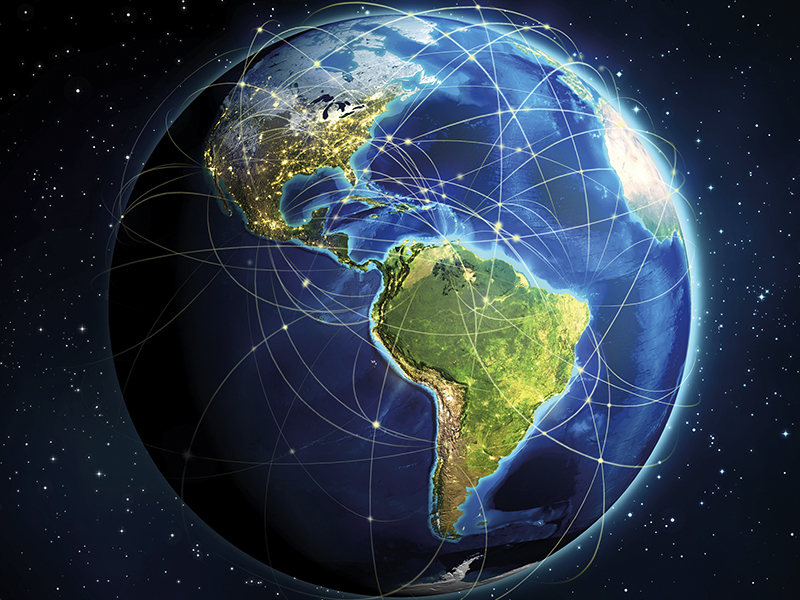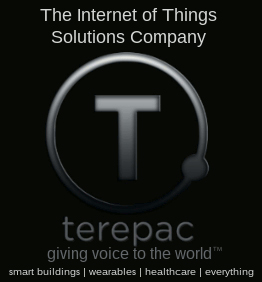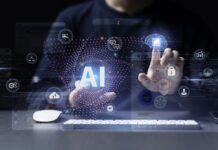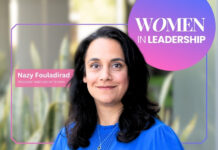A data revolution is underway: the Internet of Things is giving a “voice” to billions, even trillions, of objects – connecting them not only to the Internet but to each other. The potential consequences of this are complex and far from certain. Below, Richard Asselstine offers an insider’s perspective, outlining five key organisational implications that this “trillion-voiced world” will deliver.
It looked really cold – my annual dip in the lake. But how cold was the water? If I had a wearable computer on, I might possibly know, in that very instant, before jumping in, its sensor browser elegantly streaming real time temperature data. I would know before venturing out and jumping in. But did I want to know? Did I want the data? Or should I just take the plunge?
Good questions, because soon everything will be capable of generating data. Every thing will talk. It is estimated that we will be awash with 40 trillion gigabytes by 2020, up from 400 billion gigabytes of web enabled data in 2013.1
What is happening? What are the implications? In short, it is the Internet of Things. IoT. Internet of everything. Machine to machine. M2M, IoP. Take your pick. All of these current descriptors capturing a world where “things” that did not or could not previously have a “voice”, get one; where objects at the very edge of the network get connected – to the Internet, to each other. Billions, even trillions of voices. “Datafication” as Kukier and Mayer-Schoenberger refer to it. I offer some thoughts on this, but first some context.
[ms-protect-content id=”9932″]I run a company that does this, this Internet of Things (IoT). We give voice to the world. We connect “things” to the Internet, to give them voice. And it is fascinating! Once one “thing” gets a voice, every “thing” seems to want one. They too have a story to tell! We have therefore learned to ask, what if this could talk? We then see to making it happen, delivering a custom suite of whole solutions, IoT related solutions – hardware, secure data-managing software, host object electronics integration and interface creation – going to the very edge of the network to gather data and transform it into insight. Complex yet simple. Layered. A “stack”. A lot.
The implications of a world instrumented, a world where literally every “thing” can be heard are manyfold. Social. Political. Economic. Environmental. In this note I touch on some organisational implications of a trillion-voiced world connected.
Our Experience
Terepac Corporation was founded as an electronics miniaturisation process development company creating a new category of thin, tiny, flexible electronics; a process now gaining commercial traction. Along the way, as with most companies, we evolved. Time and again, clients and prospects, in some cases multibillion-dollar multinationals, would say, or more accurately ask of us, what would become a recurring theme. Very much along the lines of…
• Not only do we want you to instrument this – formerly analog and typically not a traditional “host” for electronics – object. That is, give it a voice. But,…
• We also need you to network it. This object must be able to speak to “others”.
• Third, we then want you to manage the data. Securely of course!
• And finally, we want you to take care of the data analytics, the data visualisation and then socialise the object to convey the data, information and insights.
The first time I heard this request, I believed it to be a “one off” and resisted. Surely these large companies wouldn’t need all that assistance. And furthermore, any CEO of an early stage tech company knows that to attract funding you must focus! To do otherwise makes you undisciplined. And this most assuredly did not feel like focus.
The message nonetheless persisted and intensified. Instrument the object. Network it. Manage the data. Then analyse, visualise, and socialise the data. For this Internet of Things we need whole solutions we were told. Tempting! Yet resist we did. Until it became overwhelmingly evident that these “whole solution” requests represented a clear and crisp vein of demand, a case that remains the same to this day. The one-off notion disappeared in the rear view mirror. The revelation emerged that there are different types of focus and needs to attend to. One, on a category – the Internet of Things, and two, on the customer. We have since, over the last three years, architected a corresponding organisational form to build whole, end-to-end, custom IoT solutions. From the silicon to the app. A six-divisioned entity, each loosely joined to the other, yet with individual profit and loss (P&L) responsibility. Complex yet simple. An Internet of Things pure play. This is the perspective I offer; five observations from inside this Internet of Things.
The Internet of Things Yields Hyper Convergence
Convergence is underway. More accurately, convergences. First, the world continues to shrink and converge because of the Internet. Geographic silos collapse. Second, and largely unseen, as “things” shrink from small (micro), to smaller (nano) and smallest (quantum), the less they fit into traditional “disciplines” of engineering and science – chemistry, electronics, mechanical. They’re just small and hang together: so small, multifunctional, and soon controllable, that they don’t know and don’t care which “department” they are in. The sciences converge.
One plus two is resulting in the ability for three to occur. Non-obvious domains of knowledge are marrying up to create Internet of Things solutions; hyper convergence. Silos of all description are collapsing. Heretofore un-meshable disciplines are becoming meshable. In our case, we collide worlds ranging from precision manufacturing to advanced conductive materials, nano electronics to UX gamification, medicine to machining, to present the types of data, information and user experience IoT customers seek. All with an eye to the design element welded in. The world comes together. Look at the coolest products emerging today and think through not only what it took, and as importantly, who it took, to bring them to life.
The Internet of Things brings together people, geographies, sciences and technologies as diverse as one could imagine. The old. The new. Centuries old to NIML. You can imagine the meetings! Exciting. Amazing!
The Internet of Things Spawns New Organisational Forms
With discipline convergence comes organisational evolution. New partnerships forged. The rule of thumb used to be that structure followed strategy. In the IoT structure is strategy! Who sits at your table drives what is served. The ingredients in our organisational potion dictate taste. That too evolves, companies tiny and titan alike.
Terepac came to life in an accordion organisational form – puffed when required, more squeezed box when best. This gave way to shamrock form – a core with supplemental satellite disciplines woven in as our technology and requirements matured to now, a Lego-like divisional structure architected to look precisely like a chalk board brush – the “wood” pointed to the customer to show a seamless, whole solution. The multi-coloured felt strips pointing inward representing the divisional functions (hardware, software, integration and interface); all that is necessary to configure a whole solution to ultimately satisfy customers in this Internet of Things world. Architected to deliver both the things, and the things connected, elegantly, to the Internet, and mobile apps. Delivering ultimately, the data. Adaptive, scalable organisational nimbility. Spawned by the Internet of Things.
The Internet of Things Will Form New Streams of Revenue
How are you going to make money? What is your business model? I recall being asked those questions when I co-formed a company that used natural language parsing to answer all manner of questions on the Internet circa 1998. I didn’t have a crisp answer at the time. Nor did anyone in the space. There was a sense that there would be ways to monetise this capability, this search and query capability, the provision of information on the Internet. It turns out there was.
I am asked those same questions today. How will you make money? The answers are easier today. We now have precedent. What we do not have precedent with, however, is the new type, and frankly amount, of data that will come from the Internet of Things. We did not know the potential of the Internet then. We do now. What we don’t yet know is the potential multiplier effect of linking trillions of objects to the Internet. Yottabytes, brontobytes, geopbytes of data. New volumes of “raw material” to be converted, transformed, monetised. New streams of revenue formed. Do I know exactly how? No. Do I very much like having a seat at the table as we make the discoveries? For sure, that “sense” now returned.
The Internet of Things Will Induce New Kinds of Funding
A layered, and some would say more complex organisational architectural choice contains its own implications. It can be a double-edged sword. It is stunningly attractive to customers. We know that to be true. It can, however, be a hard pill to swallow for “traditional” funders. Venture Capitalists (VCs) in particular as they understandably and quite successfully have tended to specialise in certain areas in the past. It would mean going outside their lanes to fund more multilayered or complex entities. Yet it is this very complexity – hardware and software – that is necessary to go to the edge of the network to gather that data and satisfy the customer.
New kinds of funding are already now responding. Increasingly there will be choices. Securities laws are and will change to allow capital to flow more freely. The disintermediation of the investment capital is already happening to some degree with the emergence of crowdfunding. Public markets will also respond as will incented infrastructure strategic partners of all description – software, hardware, integration, interface.
The Internet of Things Will Help Challenge Assumptions
Will all this data be good? Will the return on investment (ROI) be worth it or will it interfere with our R&R? Clearly there are many types of data. In my business, I want all the data I can find to inform decision-making and gain insight. On the other hand, will I want to know how fast my favourite player can skate or run, kick or throw? Coaches and scouts will want to know but do average fans care, and are they prepared to pay for it? I am a major sports fan and I am not really sure. I am more interested in how he or she thinks the game.
What we are discovering is that data is highly self-referential. In the eye of the beholder it can hold immense value. That is why we give voice to the world. It allows us all to think and view the world in a new, diverse, and perhaps more informed manner. When calorie counts came out in food packaging, the data offered a rethink. When my roof can tell me there’s a problem before I can physically detect it, I think I will like that. I know my insurer will.
So ultimately will we, and will our organisations, change with the times? Because they are upon us. Will we embrace a world datafying? Will we, as Lewin’s Change Model prescribes, unfreeze our approach long enough to move to new ground and reframe how we look at our world?
The Internet of Things will help with this. It will offer new data. And in so doing, help prevent individual and organisational psychosclerosis. Hardening of attitudes will be difficult in an instrumented world that has increasing capacities to challenge assumptions and create new possibilities.
Should we take the plunge?
I did.
About the Author
R. Richard Asselstine is CEO of the Internet of Things solutions company, Terepac Corporation.
References
1. Gantz, J., & Reinsel, D. (2012, December). ‘The digital universe in 2020: Big data, bigger digital shadows, and biggest growth in the Far East.’ IDC IVEW. Retrieved from http://www.emc.com/collateral/analyst-reports/idc-the-digital-universe-in-2020.pdf.
[/ms-protect-content]




































